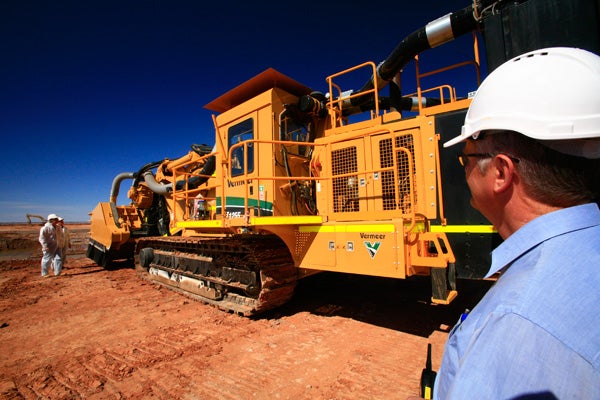
Toro Energy‘s Wiluna uranium project lies 30km away from the town of Wiluna in Western Australia. The mine covers an area of 1,500ha.
The project was recommended for approval by the Western Australian Environmental Protection Authority in May 2012. It is expected to commence production in early 2014.
A definitive feasibility study for the project is expected to be completed by the end of 2012, based on which the final investment decision will be taken.
The mine is expected to have a lifespan of 14 years and is planned to be developed at a cost of $286m. Annual production from the mine is expected to be 1,200t of uranium oxide (U3O8) concentrate.
The project is expected to create 350 jobs during its construction phase and 170 jobs during operational phase.
Reserves and geology of Wiluna’s Centipede and Lake Way deposits
The Wiluna mine consists of two main deposits – Centipede and Lake Way. The Centipede deposit includes an area of 580ha while Lake Way covers 700ha. The deposits are part of the Archaean Norseman-Wiluna greenstone belt in Western Australia.
Measured and indicated resources at the mine are estimated at 13.21 million tons (Mt) graded at 542ppm U3O8. Inferred resources are estimated at 9.68Mt graded at 480ppm U3O8.
Mineralisation in sheet-like superficial calcrete deposits
Uranium mineralisation is found in sheet-like superficial calcrete deposits located at a depth of two to ten metres at or below the water table. Mineralisation occurs in the form of readily soluble hydrated potassium uranium vandate mineral and carnotite.
Open pit mining method and location of the processing plant
Open pit mining methods will be used for recovering uranium from the Wiluna project. No drilling or blasting is expected to be required due to the shallow nature of the deposits.
Surface miners with cutting drums will be used to break the thin layers of deposits. Conventional excavators and scrapers will be used for handling waste.
The mining fleet is expected to consist of surface miners, an excavator, front end loaders, dump trucks, water carts, graders, bulldozers and road trains.
Dewatering of the open pits will be required since mineralisation occurs at or below the water table. The Centipede deposit will be mined initially and later the Lake Way deposit.
The processing plant will be situated near the Centipede deposit. Recovered ore from the Lake Way deposit will be transported to the processing plant through a dedicated haul road.
Processing uranium ore from Toro Energy’s Australian mine
A conventional alkaline agitated leach process will be used for ore processing and uranium extraction. Recovered ore will be delivered by truck to the SAG milling circuit located near the processing plant.
Related project
Etango Uranium Project, Erongo, Namibia
Etango uranium project is located in the Erongo uranium province in Namibia. It is one of the largest undeveloped uranium mines in the world.
The SAG mill will carry out the primary grinding in a closed circuit. It consists of a rotating drum which breaks large rocks of the recovered ore into finer particles. From the SAG mill the ore will be sent to the leach feed thickener to produce high solids slurries.
Thickened slurry will be fed to the leach circuit. Leaching will be carried out in a set of mechanically agitated leach tanks and in alkaline conditions by adding sodium carbonate. Uranium will dissolve to form uranyl tri-carbonate complex ion.
This leached solution will then be passed to the staged counter current decantation (CCD) circuit which displaces the uranium solution with barren water. CCD overflow containing uranium or the pregnant leach solution will be pumped to the evaporation pond to remove excess water. The leach solution will be recovered from the evaporation pond and sent to the pin bed clarifier (PBC) which removes impurities.
Clarified uranium solution will be heated to 85ºC to recover uranium in the form of uranium oxide. This process will include precipitation of sodium diuranate and a heat recovery circuit.
Transporting and handling recovered uranium from WA’s Wiluna mine
Recovered uranium will be transported by road to Port Adelaide for shipment to markets. It will also be transported by rail to the Port of Darwin. Furthermore, Toro is examining the possibility of developing an intermodal facility at Parkeston, near Kalgoorlie, for transporting the product by road to rail.






